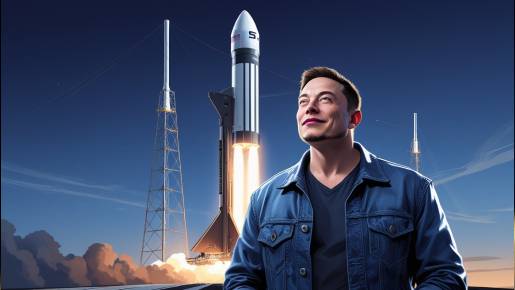Could SpaceTram Replace Rockets Forever?
Elon Musk might be losing sleep over this technology—and for a good reason. A groundbreaking innovation called SpaceTram could disrupt the entire space industry by eliminating the need for traditional rockets.
What is SpaceTram?
Developed by Dr. James R. Powell, co-inventor of superconducting maglev technology, SpaceTram proposes a new way to send satellites—and possibly humans—into space using magnetic levitation. This patented technology has the potential to cut launch costs and make space more accessible than ever before.
How SpaceTram Works
SpaceTram operates using a vacuum tube system combined with magnetic levitation to accelerate payloads to orbital speeds. By removing air resistance and friction, it achieves high velocity without relying on chemical rockets.
Key Benefits of SpaceTram:
- Lower Launch Costs – Space travel could become more affordable, enabling more commercial space ventures.
- Increased Safety – Eliminating chemical propellants reduces explosion risks.
- Sustainable Space Travel – Without traditional rocket fuel, the environmental impact of space launches decreases significantly.
The Patent Race: Who Owns the Future of Space Travel?
As space technology evolves, patent filings in aerospace engineering and space transportation have surged. Companies aiming to compete with SpaceX and Blue Origin must secure patents to protect their innovations.
Case Study: The Maglev Patent Revolution
Dr. Powell’s work on superconducting maglev transportation paved the way for not only high-speed trains but also potential space applications. His patents have influenced multiple industries, proving that securing intellectual property is key to long-term success.
How Do You Patent a Space Technology Innovation?
If you’re working on a revolutionary space technology like magnetic propulsion or vacuum tube launches, understanding the patent application process is crucial. Many innovators struggle with how to patent a space technology effectively—ensuring global protection while navigating complex regulations.
- What are the key challenges in securing patents for aerospace technologies?
Aerospace patents often involve complex technical disclosures, national security concerns, and international patentability restrictions, making the process more intricate than standard patents.
- Can you patent a space travel concept or only the technology behind it?
Abstract concepts cannot be patented, but if a concept is backed by a technological method or system, it can qualify for patent protection..
- Which countries offer the best patent protection for space innovations?
The United States, European Union, China, and Japan have strong patent systems, offering robust legal frameworks for protecting aerospace inventions.
Protect Your SpaceTech Innovation
If you’re developing next-gen space technologies, securing a strong patent portfolio is crucial. From aerospace patents to magnetic propulsion technologies, protecting your ideas ensures you stay ahead in this competitive industry.
Book a Free Consultation at PatentYogi.com to learn how to patent your cutting-edge technology today.
PS: What’s Your Take on SpaceTram?
Do you think magnetic levitation could replace rockets? Drop your thoughts in the comments!
https://patentyogi.com/wp-content/uploads/2025/04/US2016297548A1.pdf

